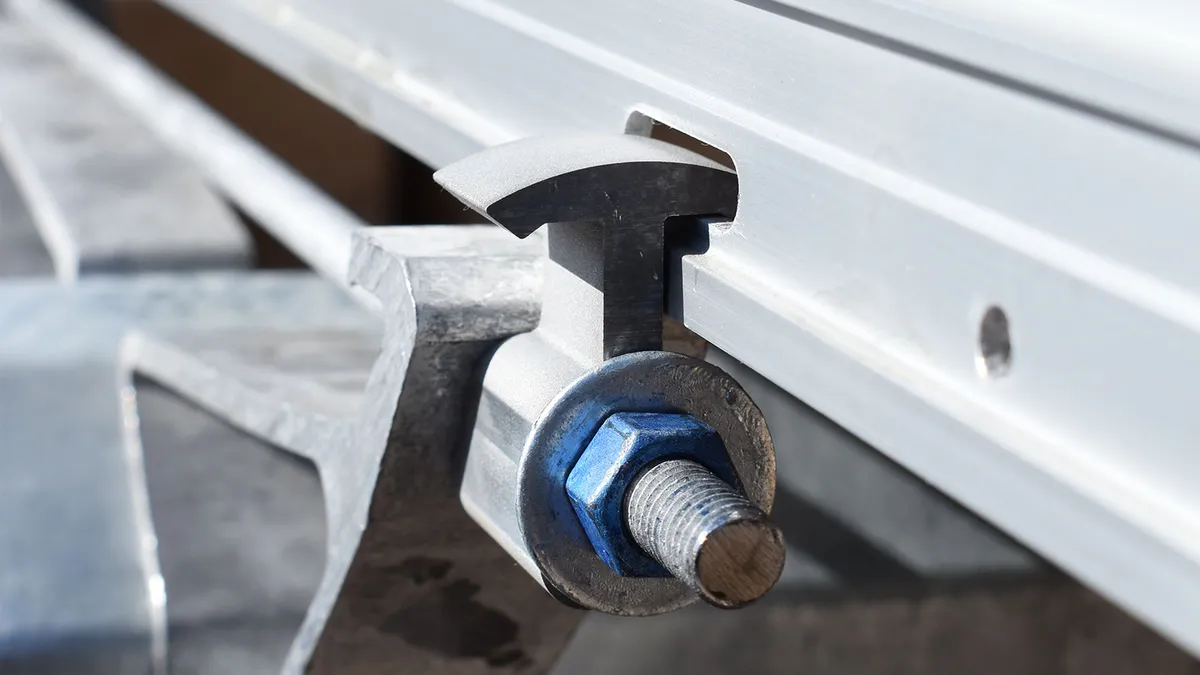Every company in the solar industry has long shared one foundational narrative: Driving down costs in any and every way is key to becoming a mainstream source of electricity. The proof of this is easy to pinpoint. As just one example, the International Renewable Energy Agency (IRENA) last year found that 83% of global utility-scale solar projects set to be commissioned in 2020 offered prices lower than that of the cheapest fossil fuel alternatives.
This ability to continuously push down solar's levelized cost of electricity (LCOE) has been fundamental to the explosive growth of solar, which, despite the onset of the coronavirus pandemic, is set for another record year. Much of the progress in driving down the cost of solar is rightfully attributed to improved scale, efficiency and innovation in the production of modules, inverters, trackers and other hardware. But the tale of solar's dramatic price declines has one important caveat.
But the tale of solar's dramatic price declines has one important caveat: construction labor costs are moving in the opposite direction. The challenge gets amplified in markets such as Texas, where there's competition for labor from directional drilling and fracking and labor shortages. Which means accelerating the economic competitiveness of solar projects increasingly requires innovation to lower labor costs.
That notion prompted solar tracking company Array Technologies to develop RapidClamp, a module clamp technology that can dramatically speed installation and reduce the equipment and materials needed to affix a First Solar Series 6 module to Array's DuraTrack HZ v3 single-axis tracker. Already being deployed on select sites, RapidClamp allows a single First Solar Series 6 module to be installed in just 11 seconds.
Rapid innovation for rapid installations
In many ways, RapidClamp is an example of one technology innovation inspiring another. First Solar's Series 6 modules deliberately include features meant to make installation faster and easier, the result of a consultative process that included its customers and ecosystem partners. One innovation in the company's Series 6 module is a design feature called the SpeedSlot.
"We developed these SpeedSlots as a better way to clamp the Series 6 and had the vision that this transverse slot would lead to fast and reliable mounting solutions," said Scott Dailey, Ecosystem leader at First Solar, the Arizona-headquartered company that designed and manufactures the module.
Conversations between longtime collaborators Array and First Solar at a trade show quickly led Array to investigate ways to modify the existing module clamp on its DuraTrack tracker to take advantage of First Solar's new SpeedSlot. "At a high level, that was the need," said Lucas Creasy, vice president of engineering at Array. "As we looked to make efficiencies for our product and customers, it became a no-brainer to utilize this existing feature in the First Solar modules."
It helped that Array already had a patented single-bolt clamping system as part of its tracker. This head start allowed Creasy and his development team to quickly develop concepts and prototypes that enabled RapidClamp to maximize installation efficiency by utilizing the SpeedSlot. This required collaboration with First Solar's product development team and was accelerated by Array's extensive experience and understanding of the motions involved with actually installing a module.
"The motion that is made as the module is clamped to the torque tube has some complexity to it," Creasy said. "We understand that motion from other products we build and where we spent time and iterations internally and with the First Solar team was getting into the details of the tolerances. The devil is definitely in the details."
Array moved RapidClamp quickly through the company's product-development process and in short order transitioned from computer simulations to proof-of-concept field tests. While plenty of details and complexities need to be accounted for in the development of a new product — from engineering to sourcing new components — the ultimate result is a product that is simple to install.
"With RapidClamp, we can not only locate a module on the single-axis tracker but can fasten it to the tracker all in one shot," Creasy said. "Instead of aligning it from top to bottom, an installer can engage the SpeedSlot and lock it in place quickly with a single bolt and move on to the next module. It's really just a process of set, click, clamp and repeat."
Large-scale projects, large-scale benefits
Obviously, sophisticated engineering is not an end in itself. The goal is to meaningfully affect the solar industry's efficiency and economics. The combination of the RapidClamp and the Series 6 module's SpeedSlot achieves lower construction costs by eliminating equipment and steps normally required to install utility-scale solar projects.
For example, modules traditionally need to be manually centered over the tracker's torque tube. "That hugely increases labor costs because it slows crews down and requires them to carry extra equipment," Dailey said. "We are glad to see the success of the auto-alignment features."
Dailey also noted that the combination of Array's RapidClamp with First Solar's SpeedSlot drastically reduces the number of fasteners required during installation.
"Consider a 300-megawatt project in Texas which requires nearly 700,000 modules. If you were mounting those with conventional bolts and nuts, that would be four fasteners per module and millions of fastening operations," he said. "If you can cut that from four to one per module, which this does, and take out another huge chunk of time with self-indexing features, the savings add up. We are optimistic this could set a new benchmark for installation speed in the industry."










